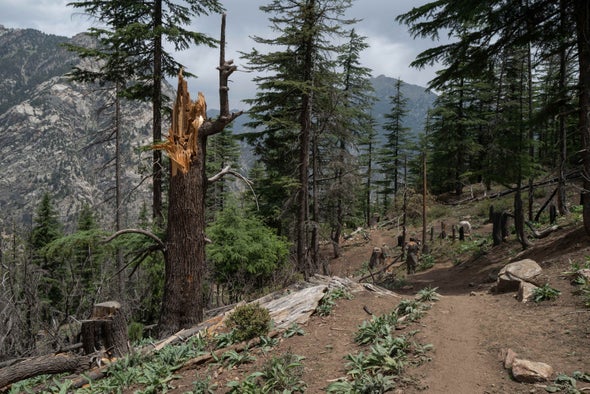WAMA DISTRICT, NURISTAN, AFGHANISTAN—When Dilaram comes into view through the trees, he’s standing astride the felled trunk of a huge cedar, the chainsaw in his hands straining as it spews smoke and sawdust. It’s 10:30 A.M., and the air is filled with the smell of conifer needles and two-stroke exhaust. Forty-year-old Dilaram, who goes by one name, has already been hard at work with fellow logger Sanaullah for six hours under the fierce summer sun, and their shalwar kameez are soaked through with sweat. A jumble of rectangular timber pieces the size of railroad ties clutters the hillside below, evidence of their morning’s work.
Eastern Afghanistan’s province of Nuristan is a green oasis in a country largely in the grip of desertification. The area is replete with tree-covered mountains and clear rivers that wind through lush, narrow valleys. Along with the neighboring province of Kunar, Nuristan is home to some of the region’s densest, oldest and most ecologically diverse forests. Yet during the past few decades, relentless and mostly illegal logging has reduced many of these rich ecosystems to shadows of their former selves. And what’s left remains under serious threat, with residents of these valleys growing increasingly desperate for income amid dire economic circumstances.
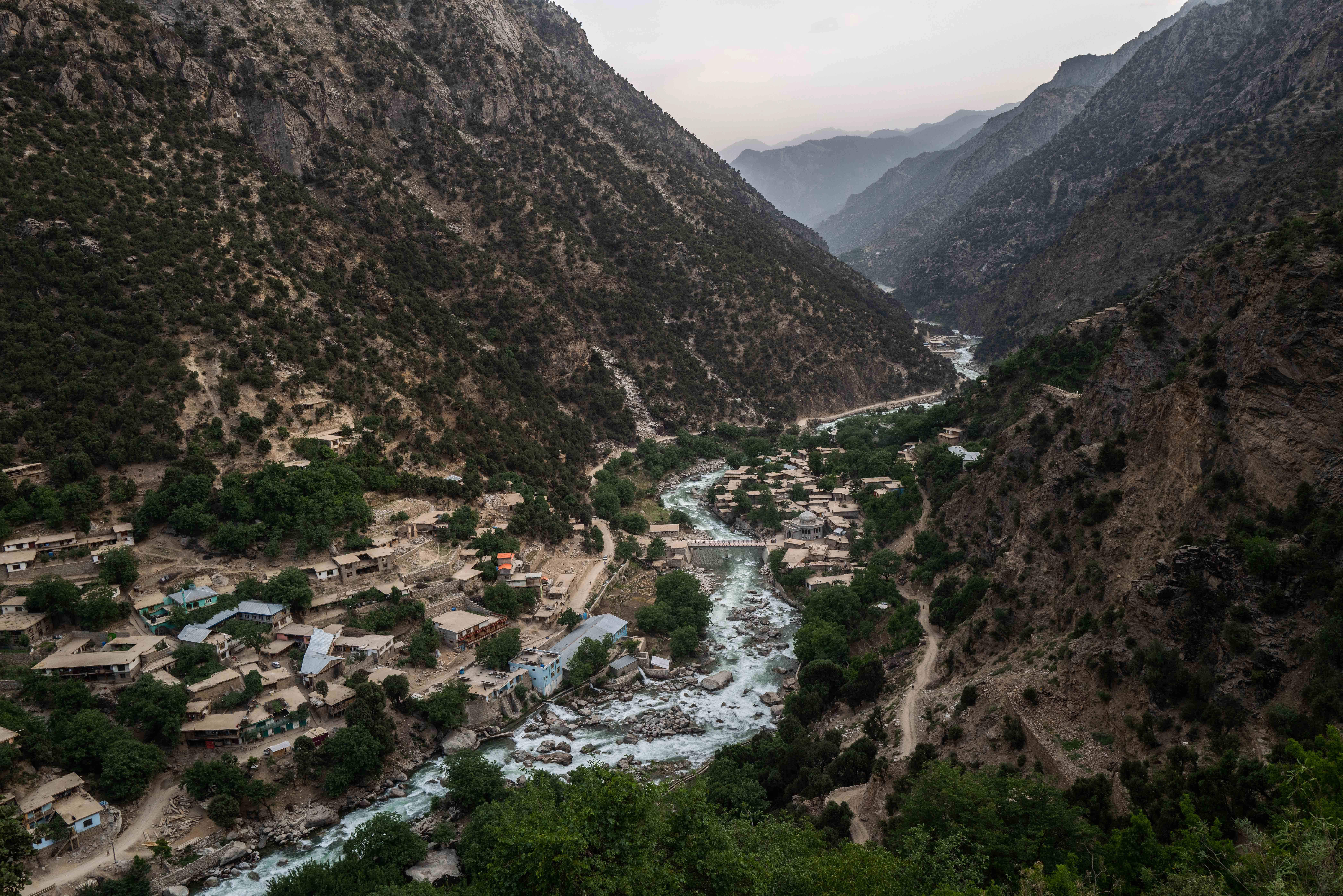
As erosion, flooding and forest fires increase across eastern Afghanistan at a frightening pace, many communities now realize that their homes, villages and farmlands may be unable to bear the ecological consequences of deforestation. Loggers themselves—many of them poor laborers with no alternative income—face an increasingly difficult choice: either abandon their only reliable way of feeding their families or continue destroying their own environment, endangering their communities and defying the notoriously brutal Taliban government’s ban on logging.
It’s a complex web of competing needs, and the balance is starting to falter.
Running Out of Options
Loggers like Dilaram and Sanaullah are essentially freelancers. They’re hired by individuals and small communities—anyone who owns land with trees on it—looking to either use the wood or turn a profit from it. Every summer Dilaram bids farewell to his wife and children at his family home in neighboring Kunar and makes the bone-jarring 10-hour journey to Nuristan in a battered Toyota Corolla taxi. Once he arrives, he pitches camp in whichever stretch of the forest he’s been hired to log that season and sets to work.
Despite the grueling physical demands of his job, Dilaram only earns roughly 40 cents for each “sleeper”—a rectangular chunk of timber about a foot wide and eight feet long—that he cuts from the forest. He says he makes about $11 in an average day. It may not seem like much, but it’s a far higher rate than many other Afghans can earn. The country’s economy remains on a knife edge, gutted by international sanctions against the Taliban government—including the U.S.’s freezing of $7 billion in Afghan government funds. A recent United Nations report estimated that 97 percent of Afghans were likely living in abject poverty by mid-2022. On the ground, the Taliban government has failed to streamline Afghanistan’s bloated and plodding bureaucracy, and international aid is a fraction of what it was two years ago. Amid such extreme uncertainty, a well-paying job is obviously a precious thing.
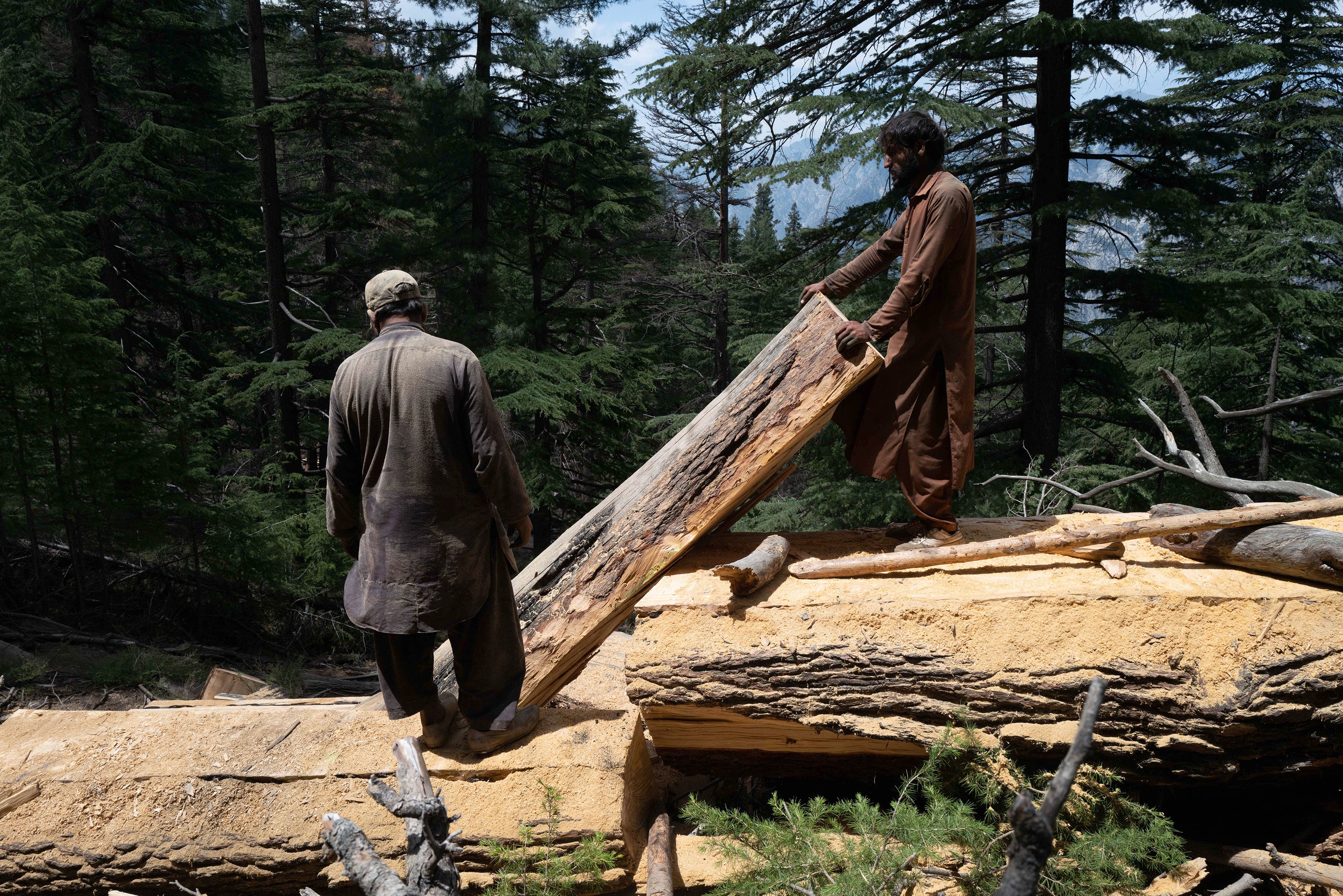
Dilaram doesn’t take this work for granted. He can’t afford to. Summer is short in the mountains, and he needs to earn a year’s worth of savings in two or three months. Once the snow arrives, the opportunity to earn will vanish for another year.
“I worked as a driver for about 10 years, but I could never earn enough money to feed my family. Working as a logger is exhausting, but at least it allows me to feed my family,” he says, pausing to shake sawdust from his beard and wipe beads of sweat from his brow with his cap.
Logging may pay better than other options, but Dilaram and his family live hand-to-mouth, like many others in the communities where he works. The daily cost of living continues to rise, and income sources were scarce in these mountains even before Afghanistan’s economy went into freefall. The rough topography makes it difficult to cultivate crops on a large scale, and many communities survive on an “eat what you grow” model, with little left to sell. The deep green pine and cedar forests are often the only real resource available to the communities who live in them.
Years of hard labor have left their mark on Dilaram’s body. He says he suffers from severe joint pain, and working without protective equipment has damaged his vision and hearing. He laughs at the thought of purchasing safety glasses or hearing protection. “How can I afford to buy things like that?” he says. “Each time I come here to Nuristan from my home, I hardly have enough money to pay the taxi fare.”
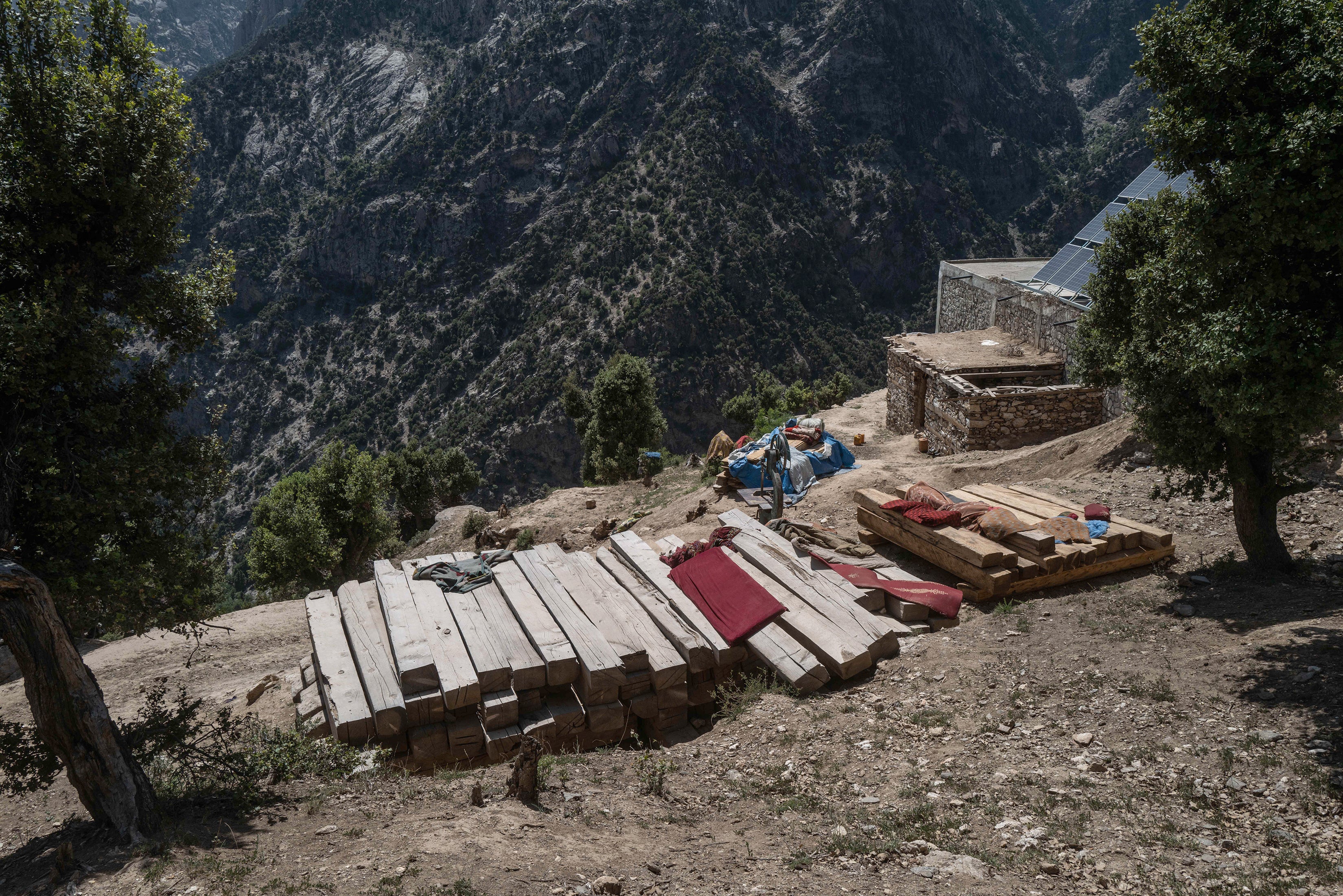
Vanishing Treasure
In the late 1970s the U.N. Food and Agriculture Organization (FAO) published a report on Afghanistan’s timber reserves at that time. It estimated there were nearly 7 million acres (2.8 million hectares) of pine, cedar and oak forests spread across the country—about 4.5 percent of Afghanistan’s total land area.
More than two decades later, in 2002, the U.N. Environment Program (UNEP) used satellite imagery to survey forest cover in Nuristan and Kunar. The findings were dire. Between 1977 and 2002, the total area of Kunar’s forest cover had shrunk by nearly 30 percent. In Nuristan, the news was even worse: there it had shrunk by 53 percent. A 2016 FAO report found that natural needle-leaved forests had shrunk to occupy only around 1.5 percent of Afghanistan’s total land area.
Illegal logging is an enormous global industry. According to INTERPOL, it accounts for 15 to 30 percent of the global timber trade and is worth some $51 billion to $152 billion annually. With so much money involved, illegal logging often flourishes amid economic instability, poverty and chronic underdevelopment. This is undoubtedly the case in Afghanistan, which is ranked 180th out of 191 countries and territories on the U.N. Development Program’s Human Development Index (a platform that tracks various factors, including income, infrastructure and education). The country still suffers from extreme economic underdevelopment after more than 30 years of war and poor management of billions of dollars in international aid.
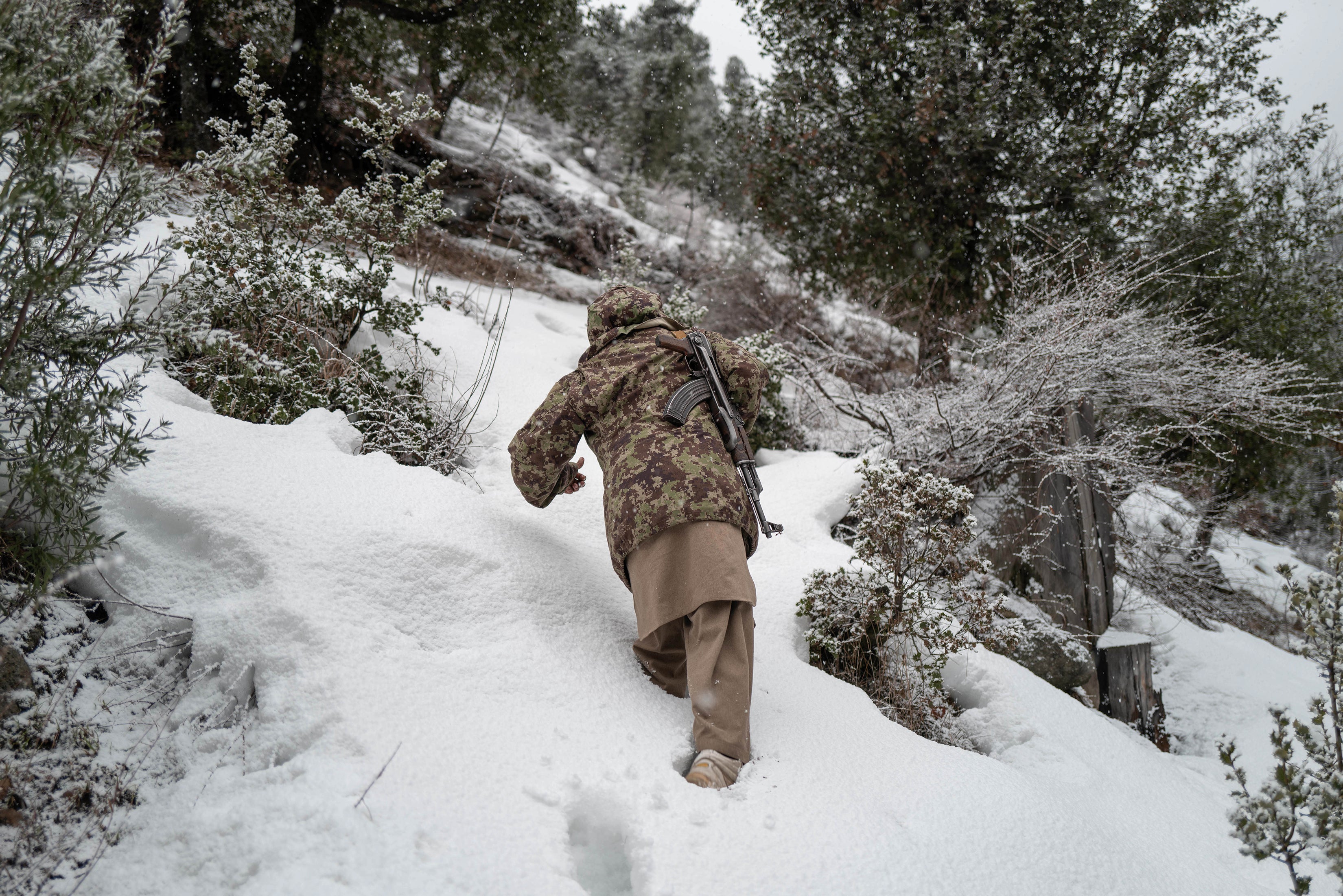
For decades, the illegal timber trade has been a crucial income source for multiple groups vying for power within eastern Afghanistan—including the Taliban and, more recently, the Afghan offshoot of the Islamic State known as Islamic State Khorasan Province (ISKP). Illegally harvested wood is most often smuggled east into Pakistan, which provides a consistent market for as much timber as Afghan smugglers can provide.
The timber trade was central to the conflict dynamics that U.S. forces faced when operating in eastern Afghanistan in the mid-2000s. The Korengal—a remote and isolated valley in Kunar—was a particular problem area for American troops.
Many Korengalis relied on income from selling timber to criminal groups based outside their valley. These groups often had links to the Taliban fighters in the valley itself. To the Americans, the solution seemed simple: if they stopped the Korengalis from selling timber, they’d stop that money getting into the hands of the Taliban. But the Korengalis’ earnings from such transactions were often the only thing that kept struggling families from falling into complete destitution. So when U.S. troops tried to stop the logging, the Korengalis themselves started attacking the Americans. U.S. forces departed the Korengal in 2010, and the logging promptly returned. Today it remains the main source of livelihood for thousands of families across Nuristan and Kunar.

Loggers, drivers, vendors and day laborers all depend on income from illegal logging. The timber that passes through their hands is also vital for constructing the houses that perch on the region’s steep mountainsides, and it’s the raw material for a thriving woodworking industry that exports intricately carved furniture, handicrafts and homewares to other parts of the country and beyond.
The Taliban Goes Green?
Just weeks after ousting the U.S.-backed Islamic Republic of Afghanistan government from Kabul in August of 2021, the Taliban announced a ban on the timber trade. Taliban spokesperson Zabihullah Mujahid issued a tweet stating that cutting down forests, as well as selling or transporting timber, would be strictly prohibited. “Security agencies and provincial authorities must prevent it,” he wrote.
Then, in December 2021, Taliban officials announced the creation of the “Green Unit,” a special military unit tasked solely with protecting Afghanistan’s forests from illegal logging.

As recently as a press conference in early November, 2022, Hafiz Aziz Rahman, acting head of Afghanistan’s National Environmental Protection Agency, decried the Taliban’s exclusion from the COP27 international conference on climate change, which was held near the end of last year in Egypt. Climate change does not have national boundaries, and it should not be politicized, Rahman said.
An effective logging ban might help the Taliban government play into international notions of environmentalism—but of course, the regime also stands to gain from full control of the flow of timber-derived money out of country.
Despite the rhetoric, however, the Taliban so far seems to have taken few practical steps to address deforestation—or other climate or environmental issues. Members of the proposed Green Unit have yet to materialize in the areas they are ostensibly tasked with protecting. When asked about the status of these efforts, a spokesperson for the Taliban’s Ministry of Agriculture, Irrigation and Livestock (MAIL) told Scientific American only that the unit was “under process.”
After decades of cutting timber in the forests of eastern Afghanistan, Dilaram isn't surprised. “In 20 years of doing this work,” he says, “no one from any Afghan government has ever bothered me or tried to stop me from cutting down trees.”
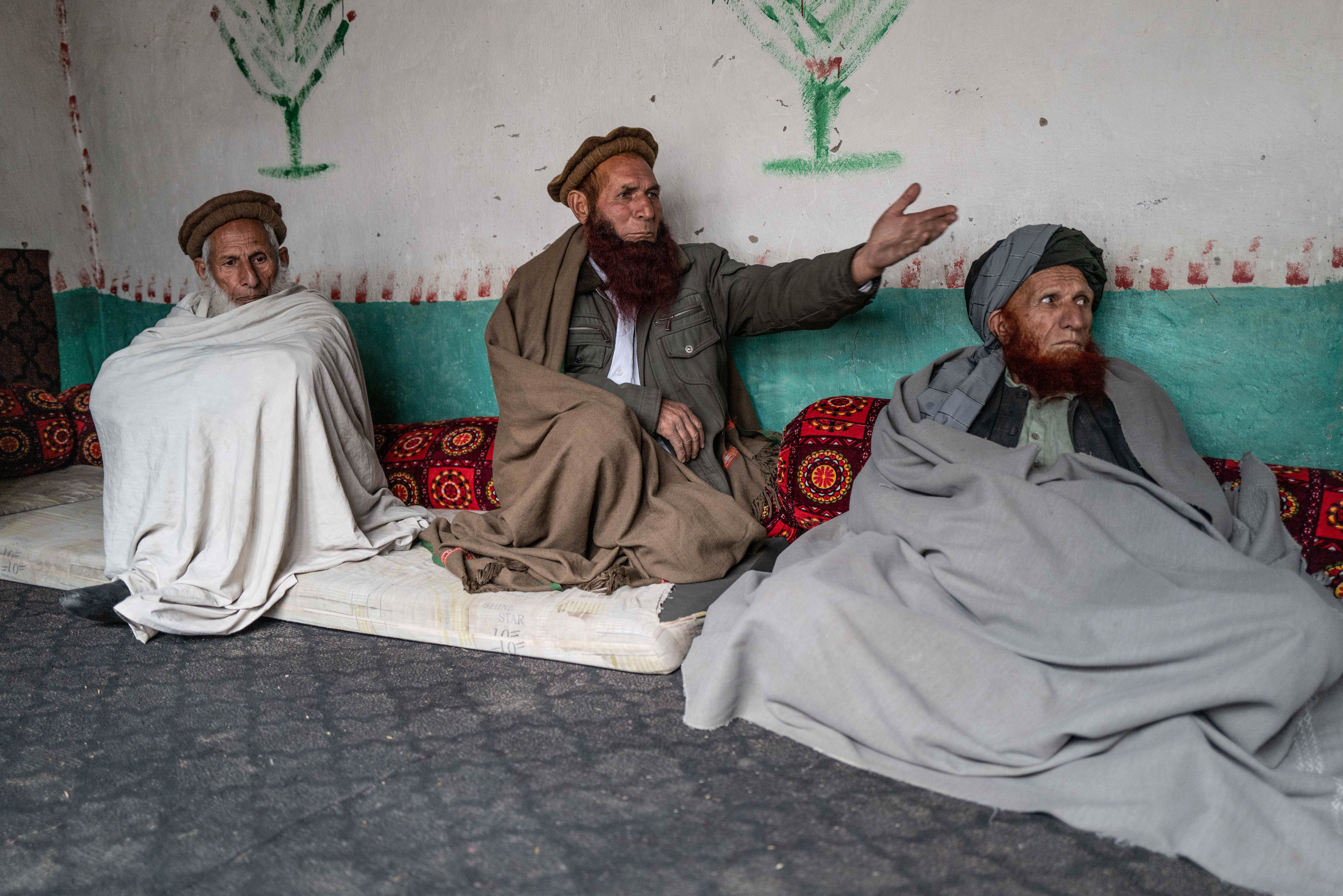
In these remote valleys, community elders and religious leaders—not government-appointed police—have traditionally played the role of law enforcers. Thus, local tribal structures often hold more sway than any central government ever has. Like Afghanistan’s previous government, the Taliban relies heavily on such structures to maintain order at the village level. This has been somewhat effective in the past, but rising economic pressure is making it steadily harder to persuade people when it comes to things like choosing the health of forests over that of their families.
Haji Din Muhammad, age 54, has lived in Nuristan all his life. Under the 2004–2021 Islamic Republic of Afghanistan government, he spent 15 years as governor of southern Nuristan’s Wama district. Tall and rangy, with a full white beard, he speaks with a calm, easy confidence. As governor, he says, he tried to use his position within local tribal structures to educate his community about sustainable forest management practices and to encourage conservation.
“We created some tribal committees across different districts to raise awareness about the importance of protecting the forests. The committees also brokered agreements with specific villages regarding the cutting and sale of timber,” Haji Muhammad says. But he doesn’t expect the Taliban to make the forests a policy focus any time soon.
“The Taliban have other priorities right now,” he says, referring to the economic and political shockwaves still reverberating across the country after the U.S. withdrawal. “They also know that the people are poor, and many don’t have any other income. If they started to enforce a complete ban on logging, it would spell economic ruin for many communities in these valleys.”
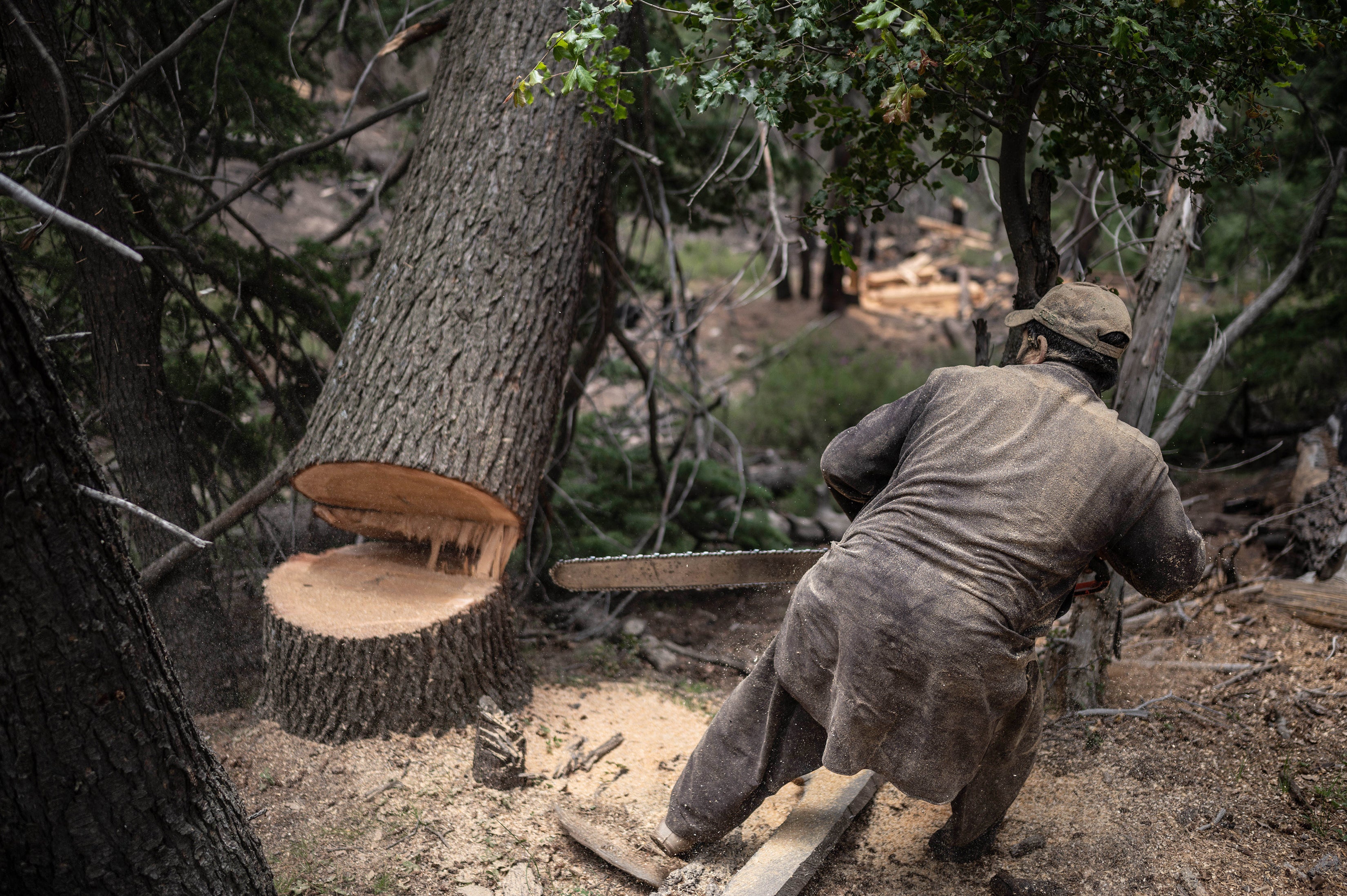
Dilaram says only one person has ever given him trouble for cutting down trees—and it happened recently. “A few months ago a guy from the village came up here and said that if the villagers don’t stop cutting down trees, the entire forest will soon be gone. But I told him that I’m not the one he should talk to; I’m just a worker. He needs to raise the issue with the villagers because they are the ones who hire me.”
The Spiral of Warming and Deforestation
Dilaram and Sanaullah often spend their busy summer months in Wama district. With more than 21,000 acres of wooded mountains and deep, verdant valleys, at first glance Wama looks like it would offer an endless supply of valuable pine and cedar. Trees are, in general, an integral part of life in Nuristan. They bear fruit and nuts to be consumed or sold, they shelter and sustain grazing animals, and they provide a livelihood and building materials for local communities. Despite the timber trade’s central role in eastern Afghanistan’s economy, harvesting these vast forests comes at a steep cost to other resources, as well as to the local ecology.
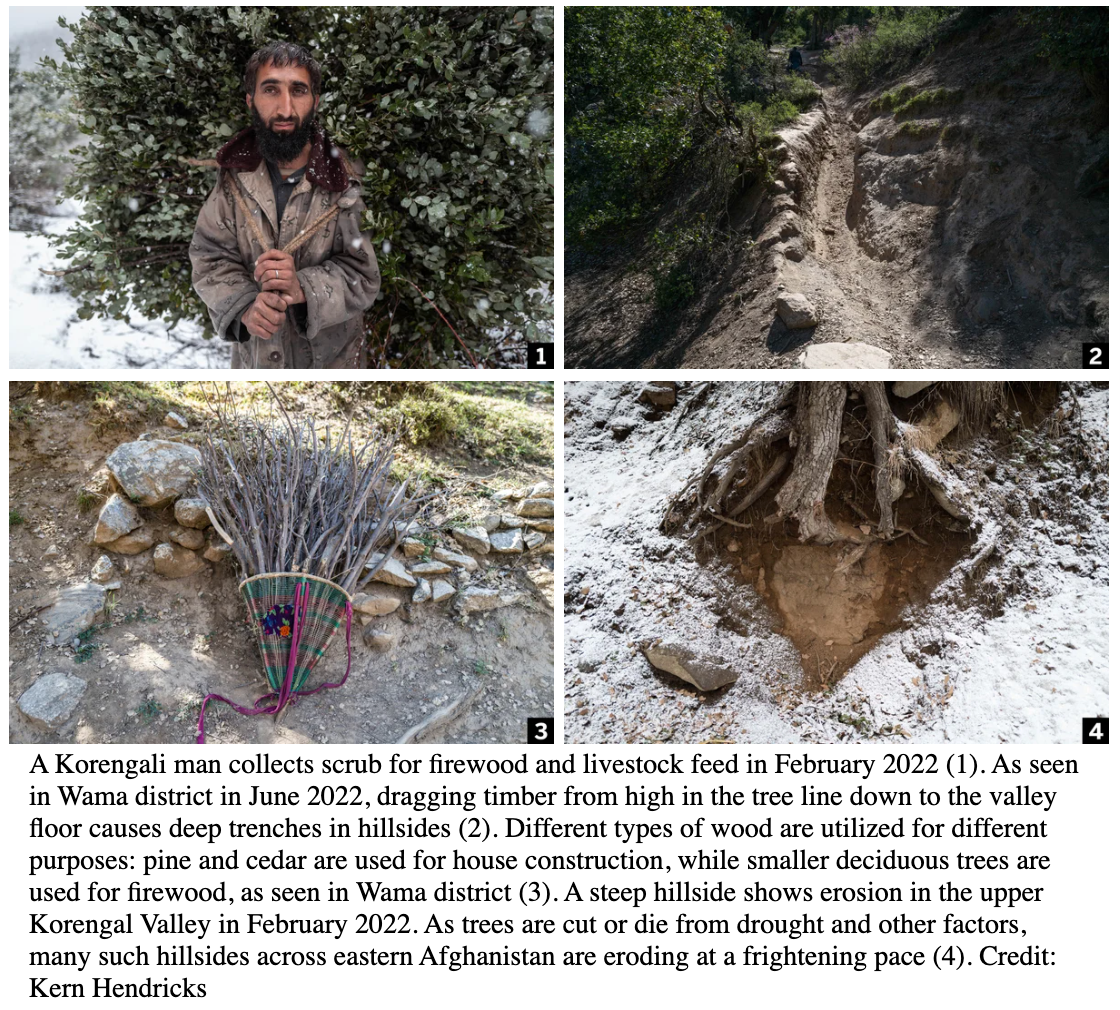
Haji Muhammad says the combined effects of logging and climate change are quickly becoming clearer to many residents. “Flooding has gotten far worse in recent years,” he says during an interview at a friend’s hillside house, gesturing toward the green valley below. In 2021, “the floodwaters came down from the forest and destroyed three walls of my family home.” His family was unharmed, but others farther up the valley were not so lucky.
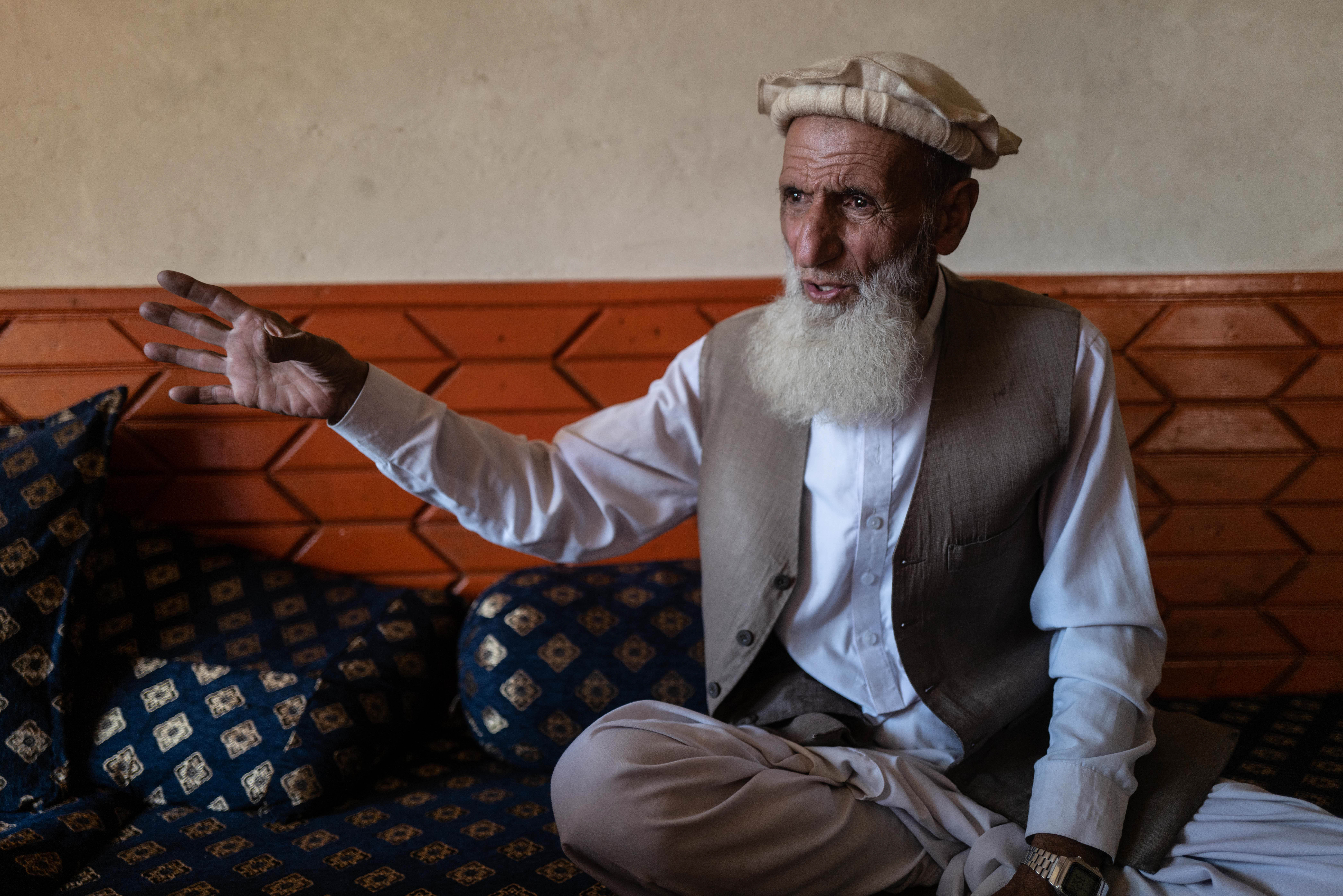
Trees act as a vital form of natural protection against the destructive effects of heavy rain and flooding. Deep root systems create porous openings in the soil that absorb rainwater hundreds of times faster than soil with no vegetation. Without this line of defense, cascading torrents of water quickly erode hillsides, placing homes and villages in danger of landslides.
Disastrous flooding struck areas across Nuristan in 2021. On the evening of July 28 that year, heavy rains triggered massive flash floods in the province’s northeastern district of Kamdesh. As raging waters quickly engulfed the valley, residents struggled to escape to higher ground. With few trees to anchor the mountain soil, entire hillsides slid into the morass. When the waters subsided several days later, the tragic results emerged. More than 260 people had been killed, according to the Afghan Red Crescent Society. Nearly 30 local businesses were destroyed, along with three mosques, seven bridges, more than 890 acres of valuable agricultural land and 3,200 fruit trees. The floods were a crushing blow to communities across the province, and some still haven’t recovered.
And the following year, the deluge returned. Between early May and late August in 2022, flash floods—often triggered by unseasonable rainfall—occurred across much of Afghanistan, killing hundreds of people and damaging thousands of homes, according to the U.N. Office for the Coordination of Humanitarian Affairs.
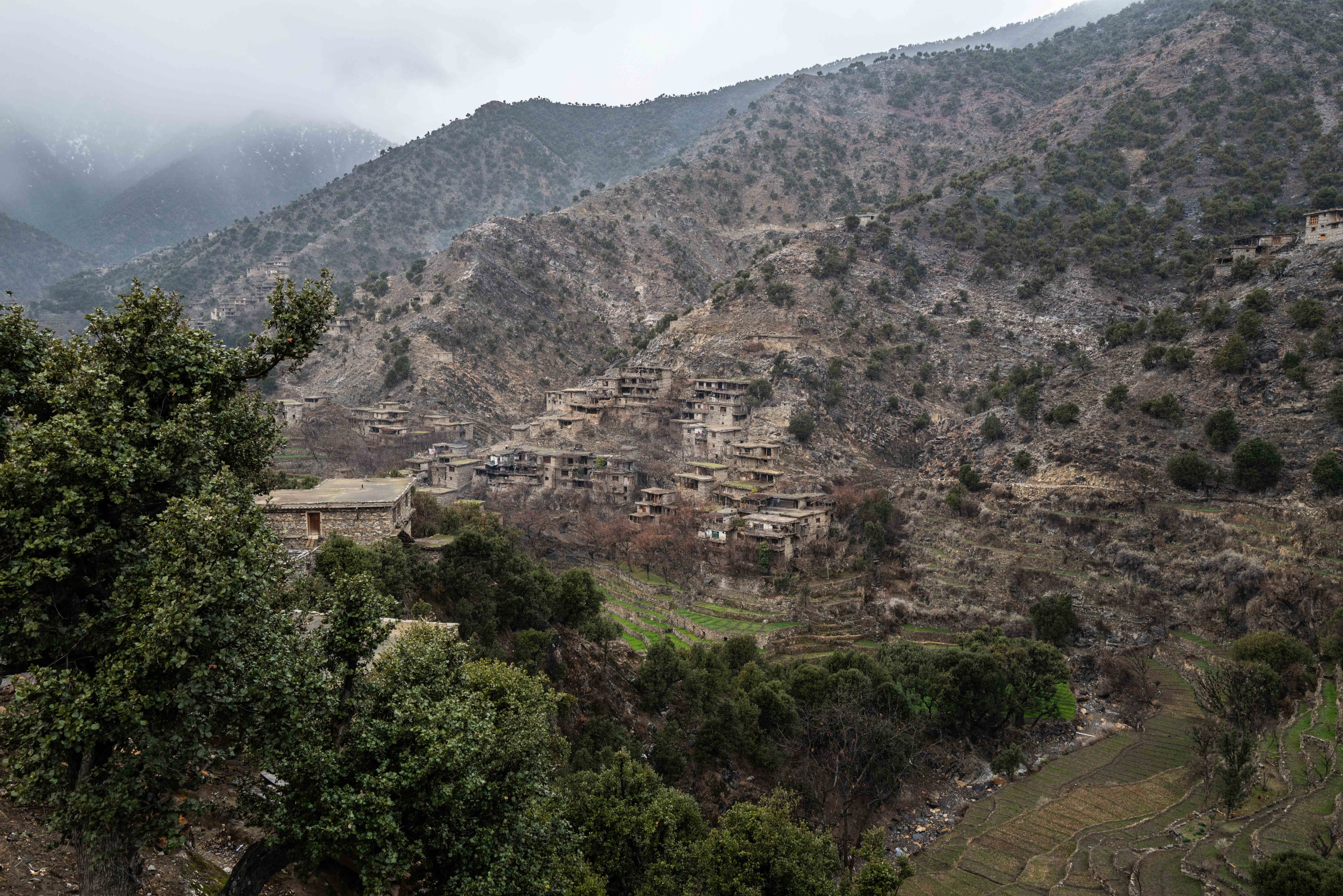
Laws of Nature
Haji Muhammad says logging has, over the years, become a point of friction between Afghan governments and local communities in the country’s east. “Before the [U.S.-backed] Islamic Republic government, there were no laws controlling the cutting of trees or selling of timber. At that time we didn’t fully understand the harm that logging was causing to the environment—but we could sell what we cut freely in the bazaar and also send it to other provinces,” he says. “Now I think many of the people here in our communities are starting to understand the true importance of our forests. Lots of people used to cut the trees without any sort of control. But I think people are gaining a better understanding of the ways that trees improve the air and weather and control flooding and the erosion of the hillsides.”
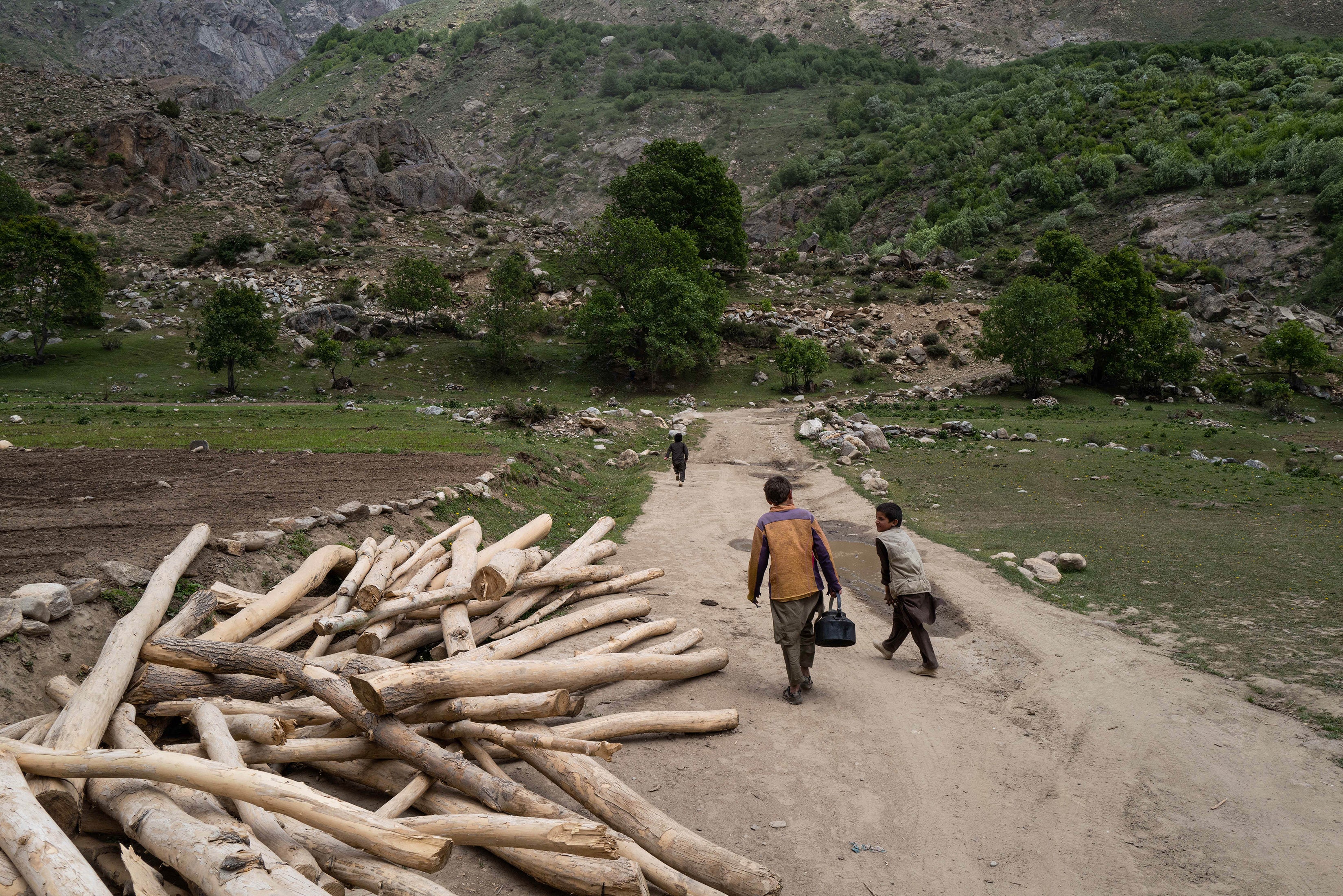
In 2002 Afghanistan’s then president Hamid Karzai signed into effect a new law—the first of its kind in Afghanistan—banning logging across the country. But the government struggled to enforce the ban, partly because of the remoteness of the communities where logging was taking place. Officials simply lacked the staffing or resources to physically access, let alone catch, offenders.
The ban was difficult to enforce for political and economic reasons, too. Local criminal networks, funded largely by cash from the timber trade, have long held immense power over local officials and would bribe or threaten anyone who moved to restrict their business. Although many communities were not fans of these “timber mafias,” they often had no choice but to rely on the jobs and income that illegal logging offered.
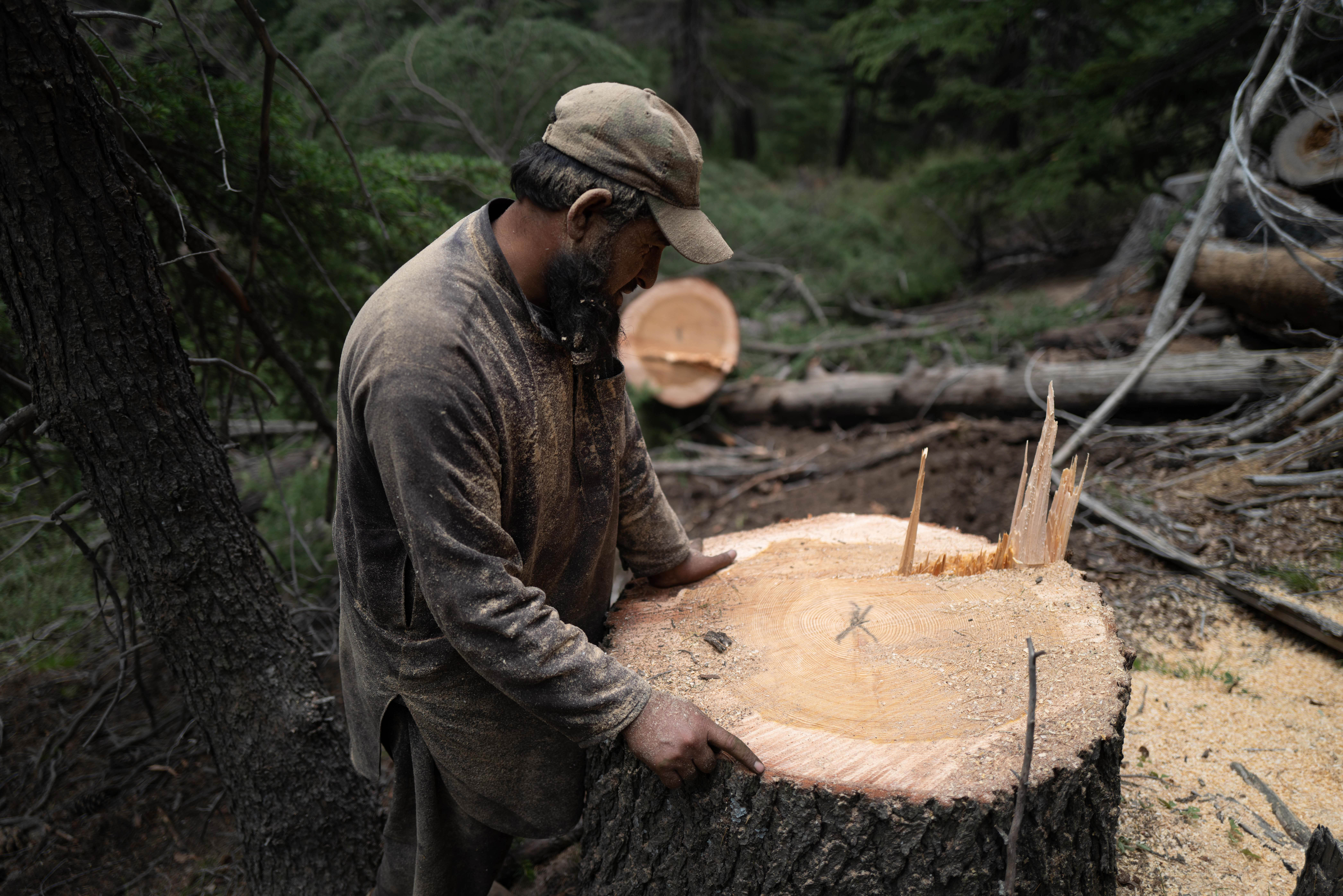
Long Shadows
As the sun dips low in Wama and the shadows of the cedars grow long, Dilaram picks up his chainsaw and checks the fuel tank. The machine looks out of place amid such tranquil beauty, even if evidence of its violent work is all around.
If the Taliban leaders ever actually do live up to their promises to prevent logging in this area, Dilaram may be working on borrowed time.
“Look around you,” he says. “In this area, thousands of trees have been cut—I know that growing them again will take 200 years or more. I know that this logging is impacting the forest,” he adds, turning his eyes to the nearest treetops. “I do what I can to cut the oldest trees to make room for the younger ones, and I don’t cause any more damage than I need to. But look at me. I can hardly keep my family afloat as it is. If I give up this work, we’ll all be finished.”
He pauses for a moment to gaze across the rugged landscape. Then he pulls the starter cord, and the chainsaw cuts through the silence once again.
